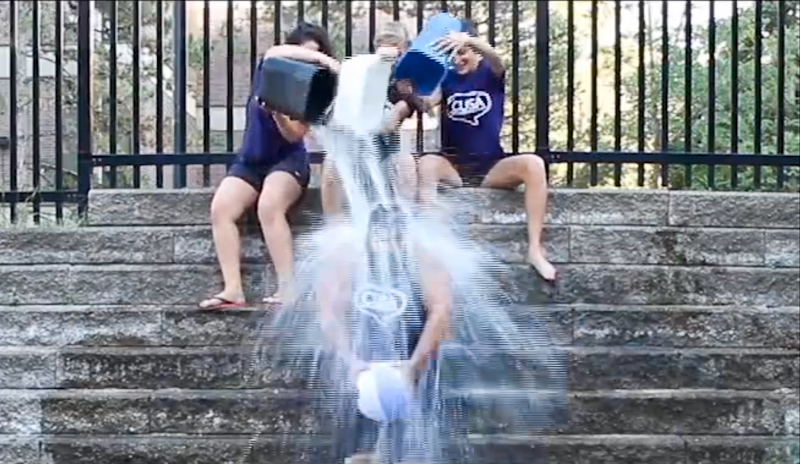Over 70,000 people dumped ice cold water on their head this August in support of the ALS Ice Bucket Challenge, the Amyotrophic Lateral Sclerosis (ALS) Association reported.
Alex Sévigny, director of McMaster University’s masters of communications management program, said the campaign took off because of its fun nature.
“It’s a social phenomenon where you humiliate yourself,” he said, comparing the challenge to football games where water is dumped on the winning coach’s head.
Although “slacktivism” is a growing term for online campaigns requiring little effort, Sévigny said he doesn’t believe in criticizing them.
“Every medium has its own way of participation. With the challenge, you have to stage it, film it and then post the video and publicize it to your friends,” he said.
From a marketing perspective, he said the ALS Association now has increased visibility and has succeeded in presenting the disease in a different light.
“The holy grail of public relations and fundraising is to modify people’s behaviours to involve your cause. By that idea, the ice bucket challenge is a huge success.”
Between July 29 and Aug. 12, the ALS Association reported receiving $4 million in donations, about four times the amount raised last year during that period.
Ryan Flannagan, director of Student Affairs at Carleton, participated in the Ice Bucket Challenge after being nominated by Folarin Odunayo, president of the undergraduate student association, as well as a Carleton campus safety officer. He said he’s learned from his work at Carleton there’s a reason the campaign is so popular with students.
“From a university perspective, social media is critical because that’s where our client base is. We use it to engage and be relevant,” he said.
Flannagan said he knows the money raised will help in ALS research, but he can see how other organizations may not be as overjoyed.
“Raising funds [is] competitive,” he said, noting Movember is a similar campaign, raising millions for prostate cancer.
“They’ve found that magical thing, and that takes money away from charities that would have otherwise got that money,” Flannagan said.
Sévigny said he’s heard this comment before, but rather than encouraging competition, he said these campaigns “set the bar” for other organizations.
Members of Brock University’s senior administration also participated in the challenge. Neil McCartney, provost and vice president (academic), said it was an opportunity to get involved and influence students.
“From my own perspective as a scientist who has done research on individuals with neuromuscular disorders, and also seen a family friend die as a result of ALS, it was a challenge I could not refuse,” he said.
McCartney said they later nominated the administration of Niagara College, aiming to involve students beyond their own school.
John Sime, a third-year Carleton law student, who has not participated, said he can see both the negative and positive sides to the campaign.
In the end, he said, people know more about ALS than they did before.
“Before I think it was ignored,” he said. “Now, I don’t think anybody hasn’t heard of the challenge. It seems like a harmless diversion, so why not?”






